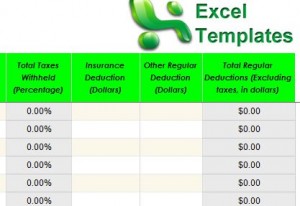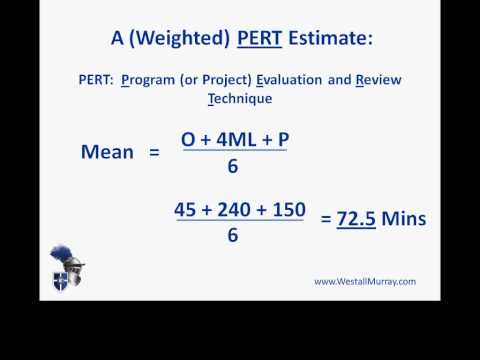Content

She is the co-founder of PowerZone Trading, a company that has provided programming, consulting, and strategy development services to active traders and investors since 2004. To claim depreciation expense on your tax return, you need to file IRS Form 4562. Our guide to Form 4562 gives you everything you need to handle this process smoothly. Section 1250 is only relevant if you depreciate the value of a rental property using an accelerated method, and then sell the property at a profit. Under this method, the more units your business produces , the higher your depreciation expense will be.
- Over the useful life of an asset, the value of an asset should depreciate to its salvage value.
- You can take a deduction for depreciation of $800 each year on your business tax return.
- Among others, you can scale your real estate portfolio tax-free with an investment property 1031 exchange.
- It included the purchase price of land, which is $10,000.
- Our experts love this top pick, which features a 0% intro APR until 2024, an insane cash back rate of up to 5%, and all somehow for no annual fee.
- Determine the annual depreciation of the building if the applicable rate of depreciation is 10%.
You have deducted your entire cost or other basis in the property. Even if the property meets all of the above requirements, it cannot be depreciated if you placed it in service and disposed of it in the same year. Depreciation commences as soon as the property is placed in service or available to use as a rental. Without Section 1250, strategic house-flippers could buy property, quickly write off a portion of it, and then sell it for a profit without giving the IRS their fair share. Section 1250 helps protect against this kind of tax avoidance.
What is depreciation?
When the reducing balance method is used, a higher initial depreciation charge may be preferred but the subsequent losses become smaller each year. For tax purposes, businesses are generally required to use the MACRS depreciation method. It’s an accelerated method for calculating depreciation because it allows larger depreciation write-offs in the early years of the asset’s useful life. Rather than paying taxes to the federal and state governments, investors use that extra cash to purchase another rental property to grow their real estate portfolio. During the four-year holding period, the investor claimed a total depreciation expense of $53,672.72 to reduce the amount of taxable income. When the property is sold, the investor is required to pay tax on the $53,672.72 up to a maximum rate of 25%, even if the investor is in a higher federal tax bracket.

Aside from the assessor’s and the appraiser’s opinions of land value, it’s also feasible for the tax preparer to use the actual purchase price as documented in the closing statement. This could be done if the closing documentation segregated what portion of the price was paid toward land, land improvements, buildings, and equipment. Bonus depreciation is a tax break that allows businesses to immediately deduct a large percentage, currently 100%, of the purchase price of eligible assets. That way, you can be sure to receive the most favorable tax treatment and avoid any surprises at tax time.
Types of depreciation
It’s a paper loss that reduces the investor’s taxable income and effectively reduces their annual tax obligation, even if there are no direct capital expenditures for the property https://business-accounting.net/ in that tax year. Full BioJean Folger has 15+ years of experience as a financial writer covering real estate, investing, active trading, the economy, and retirement planning.
- Section 179 is available for most types of assets, including general business equipment and off-the-shelf software.
- First, the deprecation rules apply only to investment properties.
- In general, residential rental property under the GDS has a useful life of 27.5 years.
- Accountants treat depreciation as an expenditure and deduct it from the final income of the company.
- While this article will walk you through the basics, any questions on your specific situation should be directed to a tax advisor.
Ms. Susan will account for this depreciation to showcase the correct value of her asset after every year in her books. At the end of its useful life the office building How to Calculate Building Depreciation would be disposed of having a scrap value of $30,000 left after years of depreciation. The latest real estate investing content delivered straight to your inbox.
How to Calculate Straight Line Depreciation
It makes sense to rely on your professional’s expertise. He or she should also be well versed in recent changes to tax laws, including how depreciation deductions can be used in the current tax year.
You must determine the cost of the structure and not the land. You can use the fair market value of each at the time you acquired the property to estimate the value. Alternatively, you can calculate the figure on the estimated real estate tax values.
Land Value Vs. Home Value
As you can only depreciate the cost of the building and not the land, you must determine the value of each to depreciate the correct amount. To determine the value, you can use the fair market value of each at the time you bought the property, or you can base the number on the assessed real estate tax values. The most recent real estate tax assessment values the property at $90,000, of which $81,000 is for the house and $9,000 is for the land. Therefore, you can allocate 90% ($81,000 ÷ $90,000) of the purchase price to the house and 10% ($9,000 ÷ $90,000) of the purchase price to the land.
When the asset no longer has book value, it is fully depreciated. (In the example above, the asset’s book value is $0 in Year 5. The asset is fully depreciated in Year 5). Year Equipment is UsedExpenseYear 1$4,000Year 2$3,000Year 3$2,000Year 4$1,000Total$10,000Use IRS documents to figure out deduction amount using the accelerated method. Take a look at the IRS’s Modified Accelerated Cost Recovery System .
It included the purchase price of land, which is $10,000. The building has a useful life of 20 years and a salvage value of $10,000. The annual depreciation is the depreciable cost divided by the asset’s useful life. Double declining method is also known as a reducing balance method, meaning that depreciation rate is applied at the Net Book Value of the asset instead of the initial cost. Next, determine the amount that you can depreciate each year. As most residential rental property uses GDS, we’ll focus on that calculation.
As a first-time real estate investor, it can be easy to overlook this tax deduction, especially if you do your own taxes. Luckily, you can claim your depreciation benefit after the fact on your recent tax return.